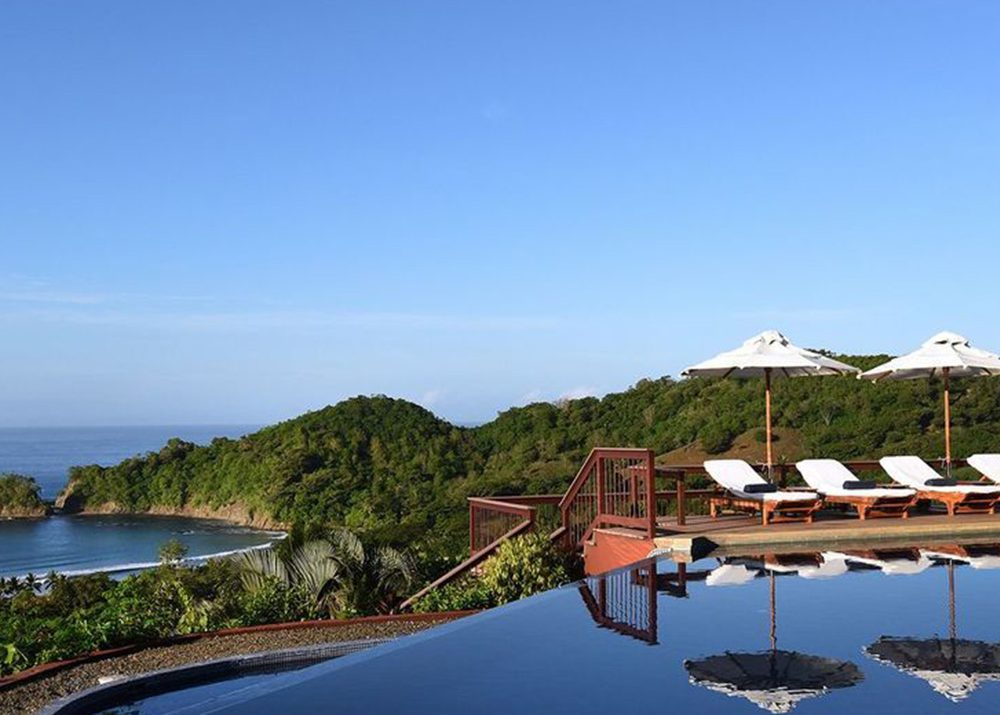Winter Eco Escapes

January – Christmas is in the rear-view mirror and there’s little on the horizon to brighten the days of the long dark winter to come. Sounds like the perfect time to plan an escape and seek out some sun. Below, we’ve rounded up some great winter sun suggestions, that mix warm days with sustainable holidaying.
Costa Rica

WHY:
This Central American country is a world leader in conservation and is on track to meet its bold goal to become the world’s first carbon-neutral country by 2021. Its flora and fauna are diverse – a country with less than half a per cent of the world’s landmass contains five per cent of its biodiversity, while a quarter of its lands enjoy protected status.
It’s also an eco-tourism pioneer, attracting visitors to its national parks and wildlife, and regularly features in lists of the world’s most ethical destinations.
The home of pura vida (literally meaning “pure life”, it’s used as an everyday greeting but embodies the national philosophy of an easy, stress-free life), was, in 2017, declared by National Geographic magazine as the ‘happiest country in the world’.
WHEN:
The ideal time to visit is between mid-December and April, during Costa Rica’s dry season.
WHERE:
Alongside luxurious accommodation, Hotel Punta in Guanacaste, on the Gulf of Nicoya, offers unique, authentic experiences for travellers exploring off the beaten track. From zip-lining and horse-riding to wildlife adventures or learning about local crafts and cuisine, there’s something for everyone.
It also takes its responsibilities seriously, supporting many local community projects, including a program for artists and the building of the local school. In addition, it supports environmental projects, including the protection of sea turtles and Scarlet Macaws.
Vanuatu

WHY:
This Pacific island archipelago, known as the ‘land of smiles’ has been busy in recent years developing its sustainability policy. As well as addressing conservation they have focused on natural disaster preparations – crucial for a country that suffered severe damage from Cyclone Pam in 2015. Alongside a goal of 100% reliance on renewable energy sources by 2030, it has also recently considered banning the use and import of single-use plastics.
The country offers stunning vistas, remote, white-sand beaches and turquoise waters. You’ll also discover plenty of adventure, from volcano treks, wreck diving and island hopping, to experiencing local customs, like the ritual of “Naghol”, the inspiration for modern-day bungee-jumping.
WHEN:
Although December to March is generally the wet season in Vanuatu, rain tends to come in short, sharp showers while average temperatures range from 26-30c. Being off-season means that prices are typically lower.
WHERE:
The Sunrise Beach Cabanas, located on the private island of Espiritu Santo, offers four adult-only cabanas, hand-crafted from natural, sustainably grown Pacific timbers. The resort is solar-powered; rain water catchment and purification systems provide water for cooking, drinking and showering and it runs a zero-pollution, self-contained, waste management system. All cleaning products used are non-toxic and the restaurant’s produce is organic and locally grown.
The resort works closely alongside the community, including local Chiefs and elders, to protect its ecology. The cove on which the resort sits is a marine conversation area, as a result of which, it now teams with stingrays, dugongs and sea turtles, which lay their eggs on the beach in front of the property.
Sri Lanka

WHY:
It may have previously been thought of as a stop-over point en route to more glamourous destinations such as The Maldives, but Sri Lanka is having a bit of a moment right now, culminating with Lonely Planet naming it their top place to visit in 2019.
In recent history, Sri Lanka was consumed by a brutal civil war that only ended in 2009, and also suffered the loss of around 35,000 people in the 2004 tsunami. However, since that time, the country has become increasingly popular with tourists, drawn to its rich biodiversity, eight World Heritage Sites and 1,600 miles of coastline. The country has worked hard to reverse the effects of major deforestation, establishing national parks, reserves and sanctuaries that now cover around 15% of its land mass.
Visitors will find much to enjoy, including varied wildlife, stunning temples, memorable train journeys, lush tea plantations and beautiful beaches.
WHEN:
For a relatively small country, the question of when to visit is complicated by it having two monsoon seasons. From December to March, you’ll avoid most rain by sticking to the south and west, while April to September is a better bet for the east of the country.
WHERE:
The Rainforest Ecolodge is situated on 500 acres of the Enselwatte Tea Estate, on the south coast of the country. It was the first hotel in Sri Lanka (and the fifth worldwide) to receive the prestigious LEED Platinum award for its eco-friendly design. The 16 chalets are formed from recycled shipping containers mounted on stilts, overlooking the biodiverse forest canopy, home to many species endemic to the area.
In addition to policies covering water and energy use and waste management, they have also built a new village for the local tea plantation workers, providing improved housing, power supply, clean drinking water and sanitary facilities, a better school, crèche, clinic and a cooperative store. Their commitment continues with a long-term goal to improve the quality of life for the tea estate community, with their participation.
Lanzarote

WHY:
Sustainability on Lanzarote was practised long before it became the buzzword it is today. One of the island’s most famous residents, César Manrique, an artist, architect and environmentalist, was determined to preserve the island and save it from mass tourism. His approach was to work in harmony with the land, building with natural volcanic stone and wood. His work can be seen across the island, most notably at Taro de Tahiche and the Jameos del Agua.
Lanzarote has been designated as a UNESCO Biosphere Reserve, largely down to Manrique’s work championing the relationship between man and nature. A must-see sight is Timanfaya National Park, home to dozens of dormant volcanoes, where public access is strictly regulated to protect the delicate flora and fauna.
WHEN:
One of the ‘islands of eternal spring’, Lanzarote enjoys average temperatures of around 20c in the winter months, while rain averages around three days a month.
WHERE:
The Isla Y El Mar works with its environment, using geothermal energy by extracting seawater from an 80 metre deep well and piping it to the rooms to run the air conditioning, while the pool is heated with solar power. The hotel was the first in the Canary Islands to receive ‘A’ level energy certification.
The hotel also manages its own organic kitchen garden onsite, which provides ingredients used in its restaurant. In addition, each room contains recycling bins for guests’ use, while the hotel is committed to raising awareness among guests, employees and partners about good waste management practices.





